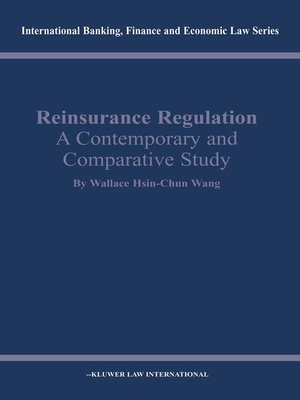Reinsurance Regulation
ebook ∣ A Contemporary and Comparative Study: A Contemporary and Comparative Study
By Wallace Hsin-Chun Wang

Sign up to save your library
With an OverDrive account, you can save your favorite libraries for at-a-glance information about availability. Find out more about OverDrive accounts.
Find this title in Libby, the library reading app by OverDrive.



Search for a digital library with this title
Title found at these libraries:
| Library Name | Distance |
|---|---|
| Loading... |
We seem to be living at a time when insurance is strained to the breaking point. From hurricanes and earthquakes to terrorist attacks and threats of nuclear devastation, enormous risks to life and property - and accompanying liabilities - proliferate on an unprecedented scale. Insurer insolvency is not yet common, but it is not unusual either. And at the root of such failures often lies the compound failure of uncollectable reinsurance. This important book proposes that a significant part of the emerging insurance crisis results from inadequate regulation of reinsurance.
In a detailed and cogent analysis of what an effective regulatory regime for reinsurance must entail, the author examines such factors as the following:
The concluding chapter presents an essential legal infrastructure that allows for efficiency, security, and individual market characteristics. The author then applies this framework to the Taiwanese insurance market, demonstrating convincingly how his proposed regime can solve specific problems while respecting Taiwan's distinct market environment.
As a meticulously considered appraisal of, and solution to, a world problem that is growing quickly and uncontrollably, Reinsurance Regulation will be of immense value to lawyers, professors, academics, and officials who deal with any facet of economic law.







